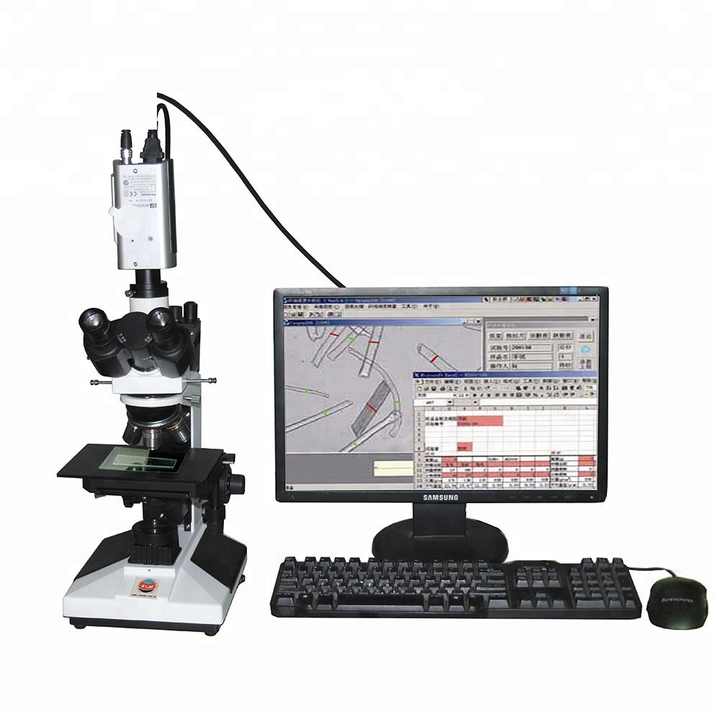Enhance Your Fiber Optic Projects With an Efficient Size Analyser
The assimilation of an effective size analyser into fibre optic tasks works as a pivotal component in accomplishing precision and consistency. By assisting in exact size dimensions, these analysers not just improve the high quality of installments but also reduce potential compatibility issues among components. The sophisticated abilities of modern analysers streamline data collection and quality control processes. As we check out the essential functions and advantages of these tools, it becomes evident exactly how they can transform project end results and make sure adherence to market requirements. What stays to be discussed is exactly how to successfully execute these analysers in your existing workflows.
Value of Diameter Dimension
Determining the size of fiber optic wires is an important job that ensures ideal efficiency and dependability in interaction systems. Accurate size measurement is crucial for numerous factors, mostly for maintaining signal integrity and minimizing loss. A wire's size straight influences its capability to transfer light efficiently; deviations from the defined diameter can lead to increased depletion, which impacts the overall performance of the network.
Moreover, exact measurement is vital throughout the installment and upkeep of fibre optic systems. An incorrect fit in between cable televisions and ports can result in signal degradation or complete failure of communication web links. By making certain that sizes are within defined tolerances, specialists can enhance compatibility in between parts, causing enhanced system dependability.
In addition, size measurement plays a substantial duty in top quality control during production. Uniformity in the diameter of fibre optic cables is essential for ensuring uniform performance across various batches. optical fibre diameter analyser. This consistency aids producers maintain industry standards and cultivates self-confidence amongst end-users
Features of an Effective Analyser
An effective analyser for fiber optic tasks should include several essential functions that boost accuracy and usability in size measurement. High-resolution optical sensors are necessary for exact diameter analyses, enabling individuals to find also the smallest variations in fibre density. These sensing units should be matched by sophisticated calibration systems, ensuring consistent efficiency across various problems and products.
Second of all, a straightforward user interface is critical for facilitating simplicity of operation. This includes instinctive software program that enables smooth data input and output, together with graphes of the dimensions taken. A mobile layout boosts use in various field settings, making it easier to conduct evaluations on-site.
Additionally, the analyser needs to sustain numerous measurement modes, fitting different fiber types and applications. The ability to store and fetch historic information is an additional vital function, enabling customers to track efficiency over time and make informed choices.
Benefits for Fibre Optic Projects
Applying a size analyser in fibre optic tasks uses considerable advantages that dramatically improve project efficiency and high quality. Among the key benefits is the capacity to make sure exact measurements of fiber size, which is critical for keeping optimal efficiency in fibre optic systems. Precise diameter analyses aid in the identification of inconsistencies that could cause signal degradation or loss, hence making certain high-grade transmission.
In addition, using a diameter analyser simplifies the top quality control process. By automating measurement tasks, project groups can decrease the time invested in hands-on inspections, bring about faster task completion and minimized work costs. This performance likewise allows for even more strenuous screening protocols, causing improved item dependability.
Furthermore, you can try these out uniformity in fibre size measurements advertises compatibility with various other fibre optic elements, minimizing the threat of installation mistakes and enhancing total system performance. The consolidation of a diameter analyser not only help in preserving sector standards yet also fosters self-confidence in project deliverables.
Combination Into Existing Operations
Incorporating a size analyser right into existing operations can significantly enhance the functional efficiency of fibre optic projects. By effortlessly including this technology, teams can accomplish specific measurements that are important to maintaining the integrity and efficiency of fiber optic systems. This integration permits real-time data collection and analysis, which can be critical throughout the production and installment phases.
Furthermore, the capability to automate size dimension processes decreases the capacity for human mistake, making certain consistent quality control throughout the job lifecycle. The data produced can be quickly shared across systems, promoting collaboration among designers, service technicians, and project managers. This accessibility improves decision-making and speeds up job timelines.

Selecting the Right Diameter Analyser
When picking a diameter analyser for fiber optic tasks, it is vital to take into consideration a number of key aspects that directly influence measurement precision and operational performance. The useful source resolution and precision of the analyser need to line up with the certain requirements of your task. Higher resolution tools can detect minute variants in diameter, which is crucial for making sure optimal performance in fiber optic systems.
Next, examine the speed of their explanation measurement. For tasks with tight due dates, a size analyser that provides quick information purchase can dramatically enhance efficiency. In addition, consider the analyser's compatibility with existing systems and software application. A smooth integration decreases arrangement time and minimizes interruptions throughout procedures.
Another important element is the variety of diameters the analyser can suit. Make certain that the chosen tool can manage the particular dimensions of fibre optics you are working with, as well as any type of prospective future demands. Finally, assess the supplier's assistance and warranty offerings. When fixing or seeking support, reputable client service and technical assistance can confirm indispensable. By meticulously reviewing these variables, you can pick a diameter analyser that enhances the effectiveness and accuracy of your fiber optic jobs.
Conclusion
In conclusion, the combination of a reliable diameter analyser is extremely important for improving fiber optic jobs. Specific size dimensions guarantee optimum efficiency and reliability while lessening installation mistakes (optical fibre diameter analyser).
A cable's diameter straight affects its capacity to transfer light properly; discrepancies from the defined size can lead to enhanced depletion, which influences the overall performance of the network.
